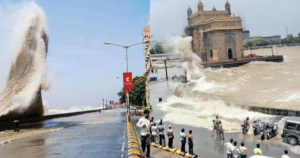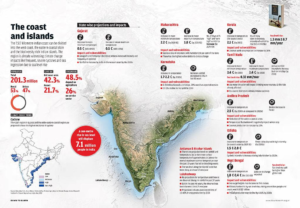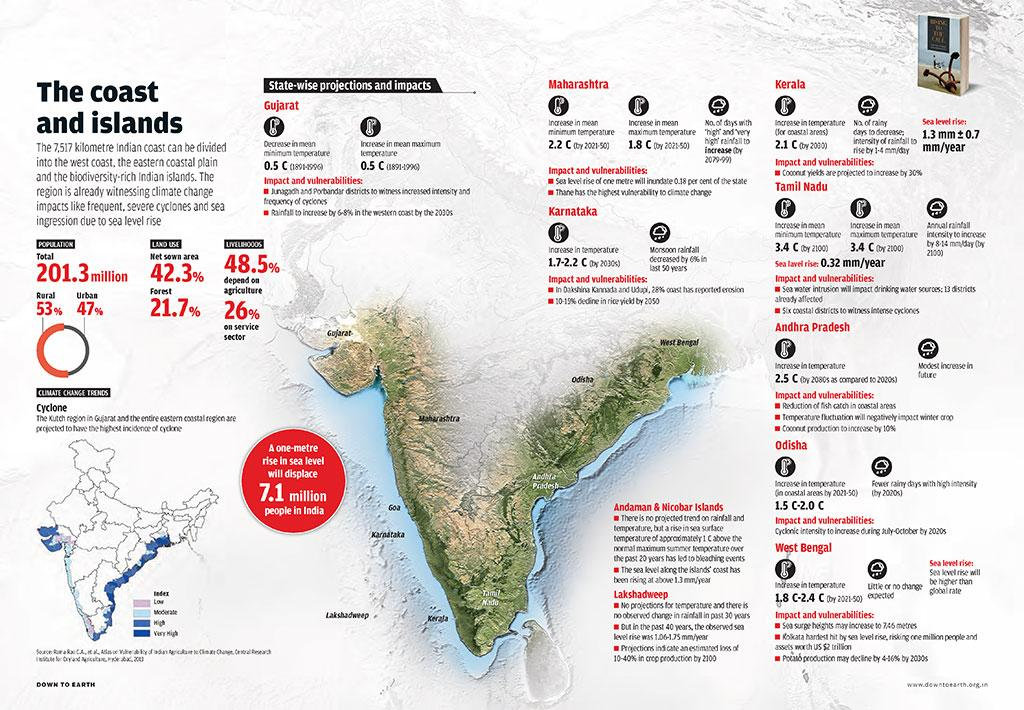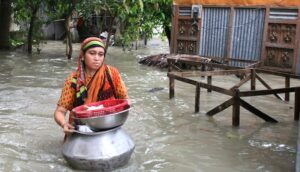Cyclone Michaung Highlights Climate Threat: A Dozen Indian Cities at Risk of Flooding by Century’s End
Explore the heightened risk of flooding in Indian cities due to climate-induced disasters, as exemplified by Cyclone Michaung. Beyond Chennai, this article delves into the potential impact, revealing that up to a dozen cities could face three feet of water by the end of the century
 The recent flooding triggered by Cyclone Michaung has underscored the looming threat that climate-induced disasters pose to Indian cities. While Chennai grapples with the aftermath of the cyclone, a more extensive concern emerges – a dozen Indian cities could be submerged under three feet of water by the close of this century.
The recent flooding triggered by Cyclone Michaung has underscored the looming threat that climate-induced disasters pose to Indian cities. While Chennai grapples with the aftermath of the cyclone, a more extensive concern emerges – a dozen Indian cities could be submerged under three feet of water by the close of this century.
Cyclone Michaung’s impact serves as a stark reminder of the vulnerabilities faced by coastal cities in the face of climate change. Rising sea levels, extreme weather events, and inadequate infrastructure pose significant challenges to urban centers across India.
Beyond the immediate aftermath of Michaung, the long-term projections indicate a troubling trend. A dozen cities, not limited to Chennai, face the risk of substantial flooding, with water levels reaching three feet by the end of the century. This projection highlights the urgency of adopting resilient measures, implementing climate adaptation strategies, and fortifying infrastructure to safeguard these vulnerable urban areas.
 As global temperatures continue to rise, the frequency and intensity of cyclones and other climate-related events are expected to increase. The repercussions extend beyond individual cities, impacting economies, livelihoods, and the well-being of communities.
As global temperatures continue to rise, the frequency and intensity of cyclones and other climate-related events are expected to increase. The repercussions extend beyond individual cities, impacting economies, livelihoods, and the well-being of communities.
Addressing the threat requires a concerted effort at local, national, and international levels. Mitigation and adaptation strategies must be prioritized to build climate-resilient cities capable of withstanding the challenges posed by a changing climate. The lessons learned from events like Cyclone Michaung underscore the imperative for proactive measures to secure the future of vulnerable urban centers in India and around the world.
Chennai’s Deluge: Cyclone Michaung Exposes Indian Cities’ Vulnerability to Climate-Induced Disasters
Explore the recent flooding in Chennai, triggered by Cyclone Michaung, as a stark reminder of Indian cities’ susceptibility to climate-induced disasters. The article highlights the impact of over 40 cm of rainfall, the devastation caused by the cyclone, and the urgent need for climate resilience measures.
 The recent deluge in Chennai, triggered by Cyclone Michaung, serves as a poignant illustration of the vulnerability of Indian cities to climate-induced disasters. With over 40 cm of rainfall inundating the city within a span of 48 hours by December 4, 2023, Chennai’s plight underscores the escalating climate crisis confronting urban India.
The recent deluge in Chennai, triggered by Cyclone Michaung, serves as a poignant illustration of the vulnerability of Indian cities to climate-induced disasters. With over 40 cm of rainfall inundating the city within a span of 48 hours by December 4, 2023, Chennai’s plight underscores the escalating climate crisis confronting urban India.






